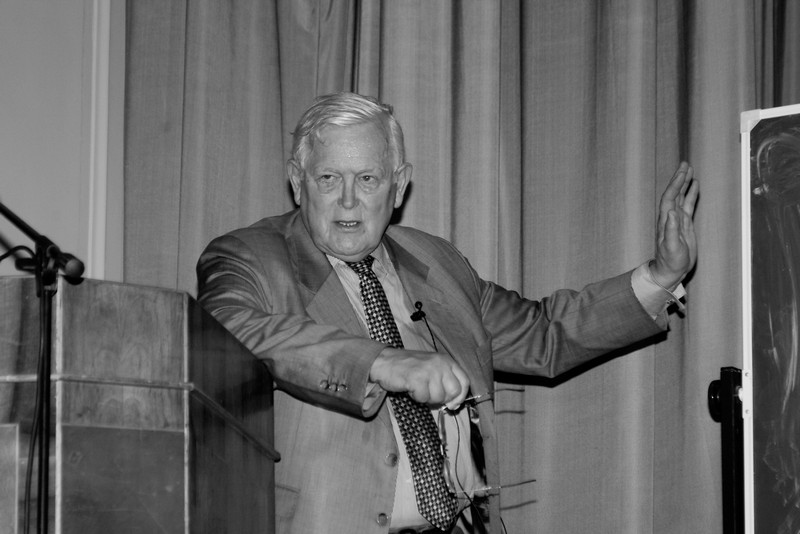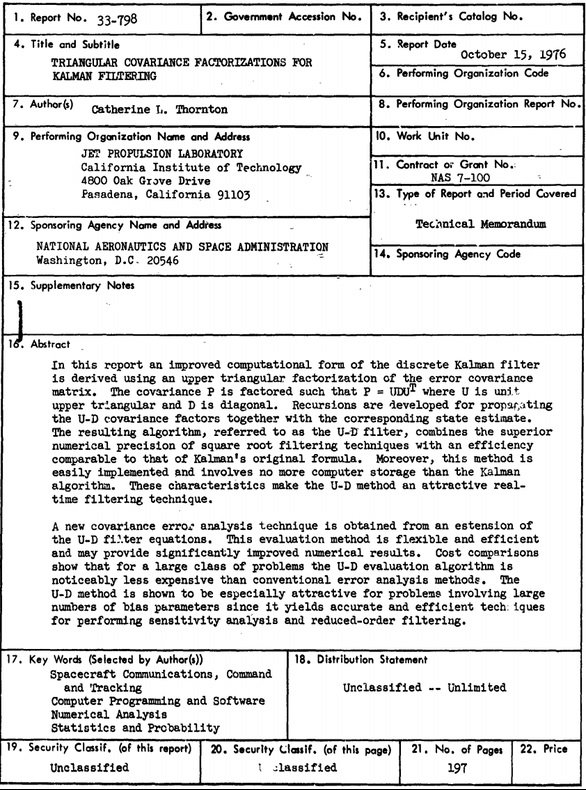
On the 51st anniversary of the first human landing on the moon in July 1969, let's recall the fundamental technology that helped make this landing possible: the Kalman filter . Named after Rudolf Kalman, an American electrical engineer, mathematician, and inventor of Hungarian descent, the filter is a mathematical technique that he proposed in 1960. It is especially useful for estimating the position of objects based on observations with multiple sensors and is widely used in guidance, navigation and control systems for vehicles and aircraft.
It was during Kalman's visit to NASA's Ames Research Center in Mountain View that NASA engineers saw that Kalman's methods could solve the nonlinear trajectory estimation problem for the Apollo program. However, running the Kalman filter algorithm on a 1960s computer was not possible. A technical memo (from NASA archives, see below) illustrates research work in the 1960s and 1970s that implemented a “numerically accurate Kalman filter in a memory-constrained computing system suitable for real-time applications such as , for on-board navigation of aircraft or spacecraft. "

Three-sided covariance coefficients for the Kalman filter (NASA archives)
Another major problem with the Kalman filter 50 years ago was the lack of computational stability due to round-off errors caused by the 8-bit constraint. Many complex solutions have been developed to solve this problem.
The engineering team's efforts continued and in the end, persistence paid off:
«» 2 , . «» . NASA . , . .
— , «».
In no small measure, such engineering feats made the lunar mission a success. Fifty years later, Kalman's filtering algorithm is used here on Earth in many fields, including robotics, drones and VR games. Researchers at the University of Tokyo used the Kalman filter in 2014 to make Roomba successfully detect and avoid people. The US Federal Reserve used the Kalman filter to determine long-term neutral interest rates and manage monetary policy.
Sebastian Troon, creator of the self-driving car at Google, teaches the topic of using the Kalman filter to track objects in real time to create self-driving cars. Autoware announced the release of a set this monthopen source algorithms, including the Kalman filter, and this set is focused on developing a reference implementation of an unmanned vehicle in the real world.
Over the decades of their existence, a number of technologies have evolved together and reached such a stage of development that their combination makes autonomous driving possible, useful and valuable for society. However, in order to move from prototyping to commercial implementation, companies will strive to standardize and ensure interoperability between components - hardware and algorithms. The interoperability of components fosters competition, and competition helps to improve quality and reduce cost, brings an unmanned future closer and justifies the billions of dollars spent on research and development in the field of unmanned vehicles.
References
:
@TeslaHackers — Tesla-, Tesla
@AutomotiveRu — ,

: